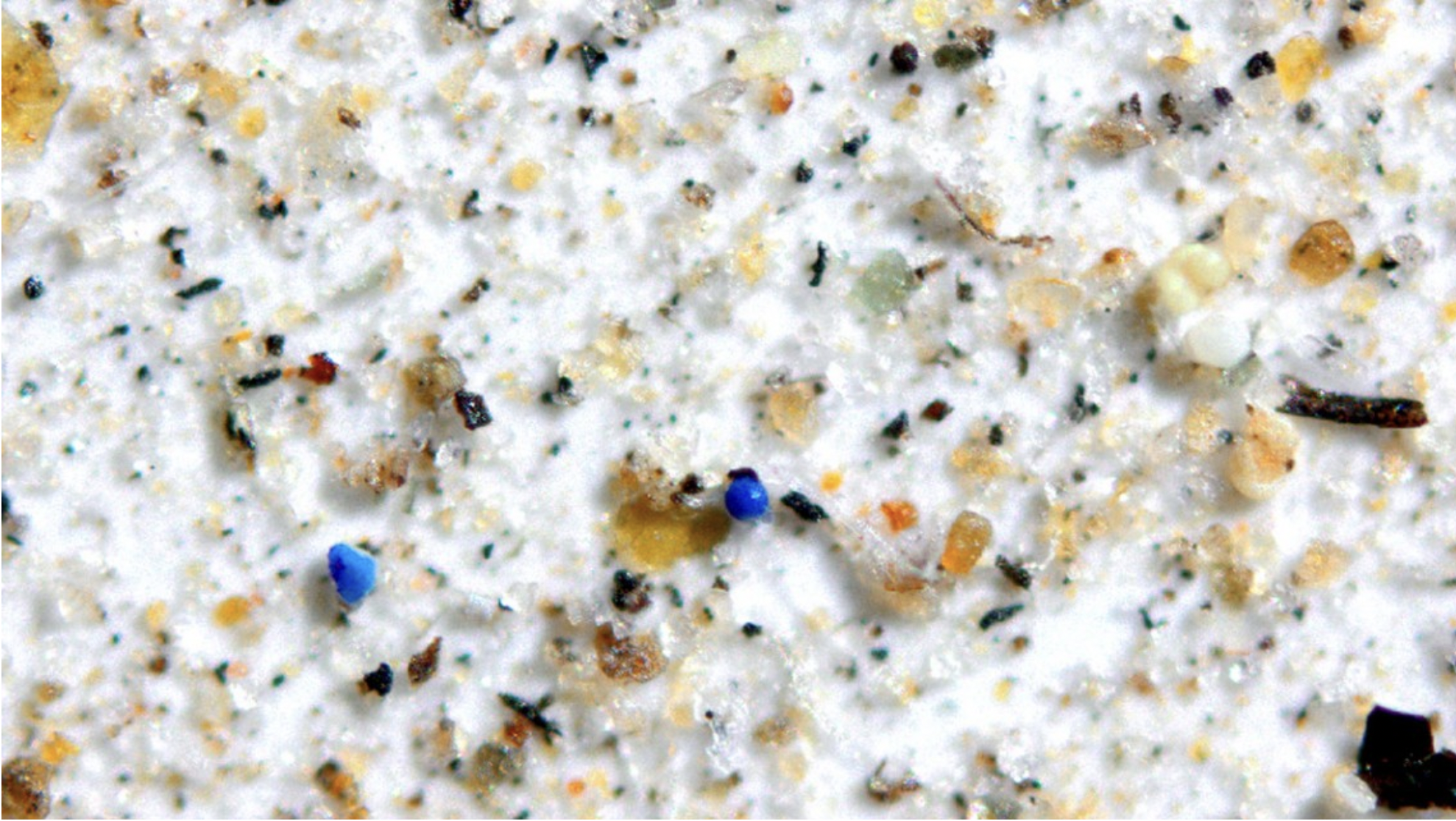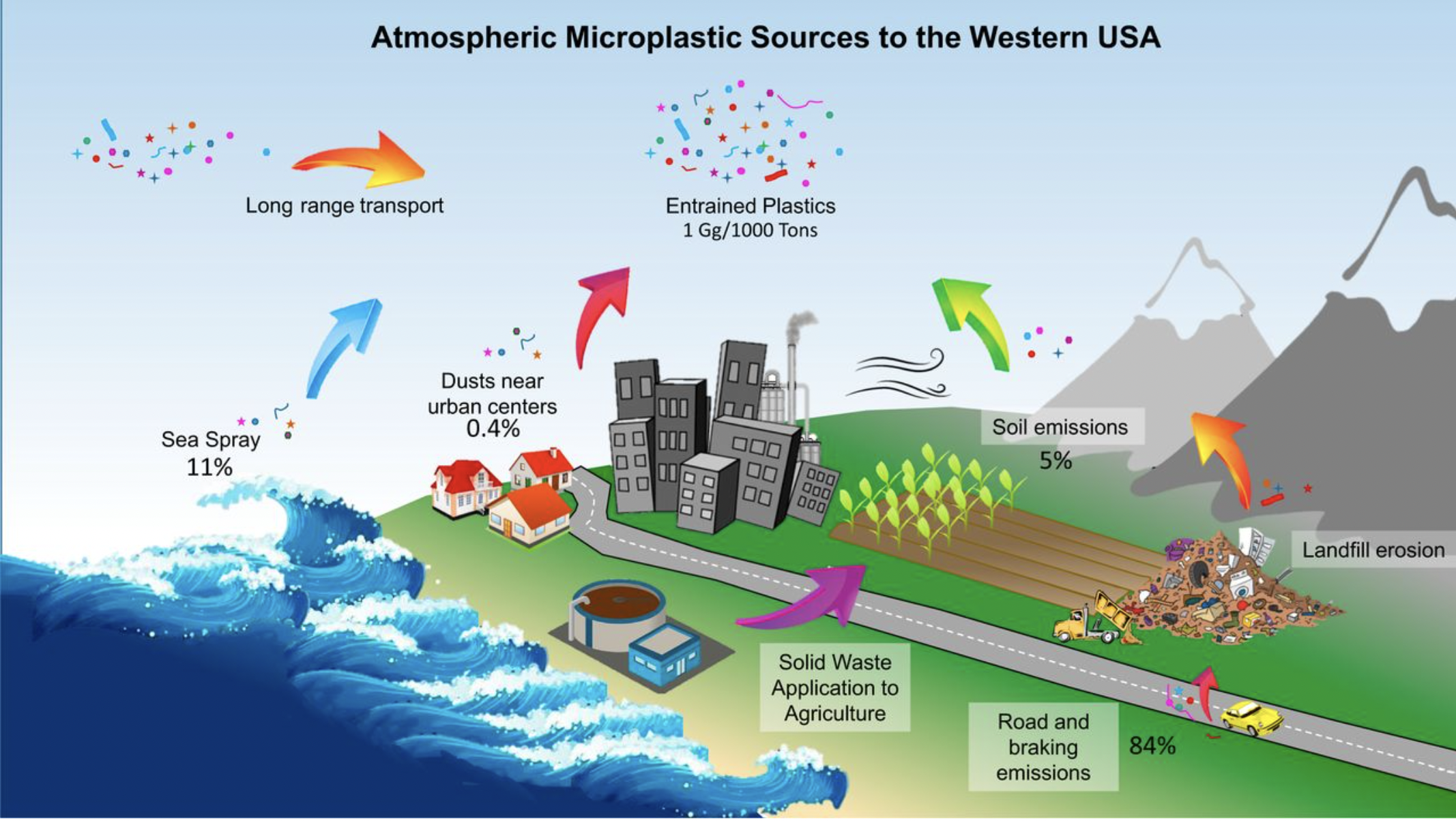by Elissa Yoder Mann, Conservation Program Manager
Earlier this year, at the height of the pandemic, when many of us were still confined at home due to cold temperatures, I enrolled in a Plastic Pollution college class; I may not be able to physically travel, but my mind could. The class was taught by Judith Enck, President of Beyond Plastics, a nationwide project based out of Bennington College in Bennington, Vermont. Appointed by President Obama, Judith served as the Regional Administrator of the U.S. Environmental Protection Agency overseeing environmental protection in NY, NJ, 8 Indian Nations, Puerto Rico, and the U.S. Virgin Islands. The class met every Wednesday for eight weeks, it was filled mostly with women older than most college students; Judith referred to us as 'life long learners'.

Source: Janic Brahney/Utah State University
Looking at samples from 11 remote areas in the western United States, including the Grand Canyon and Joshua Tree National Park, Brahney noticed brightly colored fragments under the microscope. “I realized that I was looking at deposition of plastics, which was really shocking.” Brahney didn’t have funding to study microplastic pollution, so she did the analysis on her own time, spending a “very long and stressful year” of evenings and weekends counting nearly 15,000 tiny pieces—most of them less than one-third the width of a human hair.
Brahney found a lot of tiny fibers, likely from clothes, carpets, and other textiles. She also found minuscule particles, about 30% of which were brightly colored spheres. Smaller than the plastic microbeads that have been used in cosmetics and other personal care products, the spheres are components of paints that might be released to the atmosphere during spray painting, she says.
Chelsea Rochman, an ecologist at the University of Toronto who studies microplastics, calls that finding “striking.” The paints are “a whole new source that hasn’t really been discussed before.”
The remaining 70% of the particles were harder to classify. So Brahney and a colleague turned to a technique called Fourier transform infrared spectroscopy to analyze those particles and the fibers. It showed that the samples contained on average 4% plastic. “That number blew us away,” says Brahney, who had expected less than 1%. (2)
Understanding the Plastic Cycle
The plastic that ends up in the atmosphere is not being emitted directly from landfills and garbage cans, Utah State University researchers explained.3 Instead, waste breaks down over time and ends up in a variety of different locations that then feed it up into the air. It's what the researchers are calling "legacy plastic pollution."
- Roads: Roads were responsible for 84% of the plastics found in the western U.S. dataset. Plastics are likely broken up by vehicle traffic and sent into the air by the movement of tires.
- The Ocean: The ocean was the source of 11% of the plastics found in the dataset. The 8 million metric tons of plastic that enter the world’s oceans every year are likely churned up and spit into the air by wind and wave action.
- Agricultural Soil: Soil dust deposited 5% of the plastics in the data set. This is likely because microplastics that end up in wastewater elude most filter systems and end up in the soil when that water is included in fertilizers. (3)

**Check back with us in September, Dr. Janice Brahney will be joining Sierra Club Ohio for a webinar detailing this research!
Stay up to date by joining our listserv: https://groups.google.com/a/sierraclub.org/g/ohio-past-plastic-list or
Speakers:
-
Dr. Scott Coffin, Research Scientist, State Water Resources Control Board, California EPA
-
Dr. Janice Brahney, Professor of Watershed Sciences and Director of the Environmental Biogeochemistry and Paleolimnology Lab, Utah State University
Moderator: Judith Enck, President, Beyond Plastics and Former EPA Regional Administrato